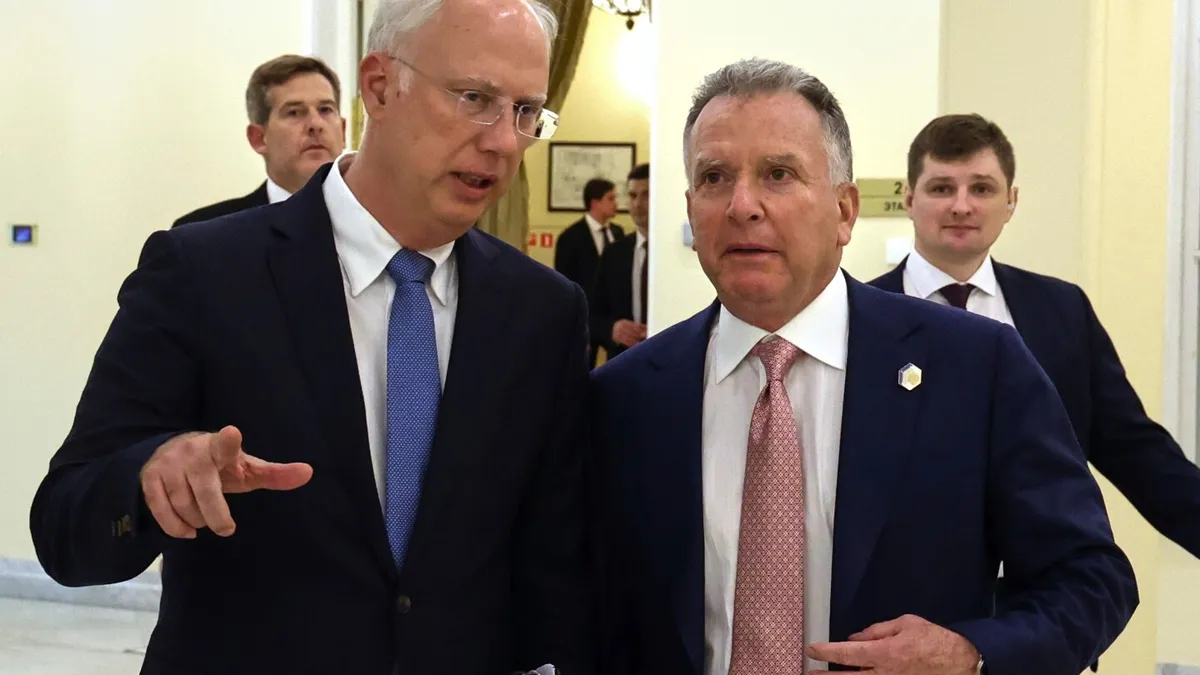
In a recent revelation, a transcript of a call between President Donald Trump’s chief negotiator, Steve Witkoff, and Yuri Ushakov, a senior aide to Russian President Vladimir Putin, has raised eyebrows regarding the U.S. approach to the ongoing conflict in Ukraine. This call, which took place on October 14, 2023, detailed Witkoff's recommendations on how Putin might effectively pitch a proposed peace plan to Trump, aiming to bring an end to Russia’s war in Ukraine.
According to the transcript published by Bloomberg News, Witkoff suggested that Putin should reach out to Trump to congratulate him on a recent peace deal regarding Gaza. Witkoff advised that Putin should emphasize Russia's support for the deal and portray Trump as a "man of peace." Witkoff stated, “From that, it’s going to be a really good call.” This approach reflects typical negotiation strategies aimed at fostering goodwill before discussing more contentious topics.
The timing of the call is significant, coinciding with Trump's announcement that the peace proposal for Ukraine had been “fine-tuned.” In light of this, Trump confirmed that Witkoff would meet with Putin to discuss the terms of the peace plan, highlighting the administration's ongoing efforts to mediate the conflict.
However, not all responses to Witkoff's approach have been positive. U.S. Representative Don Bacon, a Nebraska Republican, criticized Witkoff's suggestions, expressing concern that they may favor Russian interests. He stated, “He cannot be trusted to lead these negotiations. Would a Russian-paid agent do less than he? He should be fired,” emphasizing the skepticism surrounding the U.S. stance on Russia.
The White House has not disputed the authenticity of the transcript, with Trump referring to Witkoff's method as "standard" negotiating procedure. “He’s got to sell this to Ukraine. He’s got to sell Ukraine to Russia,” Trump remarked aboard Air Force One, reinforcing the idea that effective negotiation requires a balance of interests.
During the call, Witkoff suggested that a discussion between Trump and Putin could lead to a collaborative effort on a 20-point peace plan. He proposed that Putin could present this plan as a mutual initiative that might “move the needle a little bit.” This indicates a willingness to explore diplomatic solutions to the conflict, albeit amid concerns about the content and implications of the proposed terms.
Following the call, Trump and Putin did engage in dialogue, which occurred just before Trump’s scheduled meeting with Ukrainian President Volodymyr Zelenskyy. Shortly after that meeting, Trump indicated that Ukraine should consider halting military actions and concede territory that had been captured by Russia, a statement that raised additional questions about the U.S. stance on territorial integrity.
Further complicating matters, a subsequent conversation involving Kirill Dmitriev, a close adviser to Putin, suggested that there were ongoing discussions about how strongly Moscow should push its demands in the proposed peace negotiations. Dmitriev indicated an understanding that while the Russian version of the proposal might not be fully accepted, efforts would be made to align it closely with U.S. expectations.
The original peace plan, which surfaced last week, faced backlash for being heavily tilted towards Russian demands. It included provisions that would require Ukraine to cede control of the entire Donbas region to Russia and limit its military capabilities, alongside an agreement preventing Ukraine from joining NATO. This has led to bipartisan criticism in Washington, labeling it a Russian wish list.
In response to the controversy, White House communications director Steven Cheung asserted that Witkoff is engaging with both Russian and Ukrainian officials to facilitate peace, which aligns with Trump’s objectives for the role. Meanwhile, Dmitriev dismissed the transcript as “Fake,” suggesting that the closer negotiations come to fruition, the more desperate opposition becomes.
As the situation develops, Secretary of State Marco Rubio has maintained that the U.S. authored the proposal with input from both Russian and Ukrainian sides, aiming to clarify the nature of the negotiations amidst rising skepticism. The State Department has refrained from commenting specifically on the Bloomberg report, leaving many questions unanswered about the future of U.S.-Russia relations and the path towards peace in Ukraine.
On Tuesday, Trump indicated plans to send Army Secretary Dan Driscoll to meet with Ukrainian officials, while Witkoff engages with Putin. Trump hinted at the possibility of eventually convening a meeting involving both Putin and Zelenskyy, contingent upon further progress in negotiations, leaving the door open for continued diplomatic dialogue.